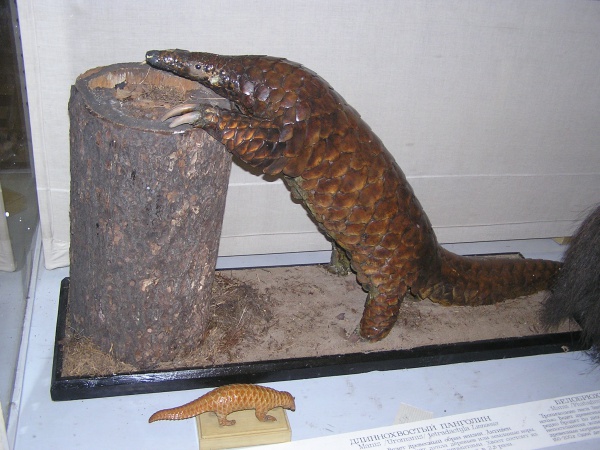Facts About Long-tailed pangolin
The long-tailed pangolin, also known as the African black-bellied pangolin or ipi, is a remarkable creature distinguished by its unique characteristics and behaviors. Part of the Manidae family in the order Pholidota, these pangolins are diurnal and arboreal, meaning they are active during the daytime and primarily inhabit trees. They primarily consume ants and are easily identifiable by their exceptionally long tails and the dark fur covering the undersides of their bodies and limbs. The name "pangolin" is derived from the Malay word "pengguling" which means "something that rolls up."
Scientifically named Phataginus tetradactyla, these pangolins have tails that can extend to about 60–70 cm, while their bodies measure around 30–40 cm, and they weigh between 2.0–2.5 kg. Instead of teeth, they have keratinous scales and a long tongue to aid in feeding. Notably, they are the smallest among the eight existing pangolin species and the only ones active during the day.
Long-tailed pangolins are found in parts of western and central Africa, particularly in the Congo Basin and Guinean forests. They favor moist, tropical riverine and swamp forests and are adept at both climbing trees and swimming, often staying close to water.
These pangolins are solitary and shy, using pheromones to communicate and remaining active during the day to avoid competition for food. When threatened, they roll into a ball and can emit a foul-smelling fluid as a defense mechanism. Their prehensile tails and strong claws make them excellent climbers, and unlike other pangolin species that prefer termites, they primarily feed on ants.
Although not much is known about their reproduction, it’s believed that females give birth to a single offspring after about 140 days of gestation. The young pangolin rides on its mother's tail for up to three months and reaches sexual maturity at around two years old.
Sadly, the long-tailed pangolin is classified as vulnerable by the IUCN. They face intense exploitation for bushmeat and traditional medicine. Although they can tolerate some habitat changes, it is crucial to implement conservation efforts to protect them from further decline.

 Tanzania
Tanzania